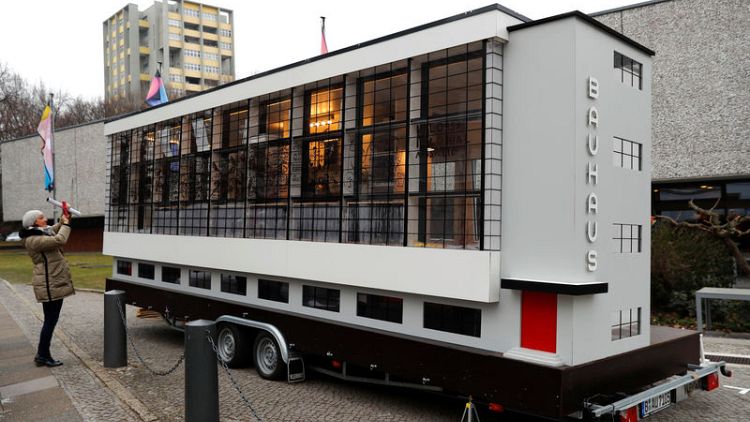By Inke Kappeler
BERLIN (Reuters) - Hundreds of events across Germany this year will celebrate the 100th birthday of the Bauhaus movement, whose "form follows function" aesthetic spread around the world, shaping modern architecture and design.
From New York's Seagram Building to Tel Aviv's White City, the clean, simple lines of Bauhaus became an integral part of the template of contemporary cities. The movement's design philosophy still inspires a century later.
"Bauhaus - with its approach to the world and art - had a decisive function. And we can still learn a lot from it," said Bettina Wagner-Bergelt, director of a festival that launched the centenary year in Berlin this month.
The "building house" art school was founded in the eastern German city of Weimar in 1919 in the aftermath of World War One, teaching a new approach to crafts and fine art that rejected the decorative frills of the pre-war era.
The avant-garde movement was suppressed in Germany after the Nazis took power in the 1930s, but its global influence spread as leading lights such as architects Ludwig Mies van der Rohe and Walter Gropius took their theories into exile.
Two new museums are opening in Germany to showcase Bauhaus-era work, in Weimar and Dessau, another eastern city where the school relocated in the 1920s.
Berlin festival-goers can explore the Bauhaus legacy through concerts and installations. In one virtual circus tent, visitors can observe dancers up close from various angles through virtual reality glasses.
Diana Schniedermeier of the Interactive Media Foundation that created the dance exhibit sees it as an extension of concerns raised by the Bauhaus artists about industrialisation and its effect on the relationship between humans and machines.
"Today we're looking at the human-machine relationship again in light of digitalisation and artificial intelligence," she said.
Germany is also sponsoring events in the United States, home to both Gropius and Mies after they fled the Nazis.
The movement broke down barriers between disciplines such as architecture and art, and opened the doors to women, said Dominic Stevens, an award-winning Irish architect.
"As a teacher of architecture, I think the Bauhaus is really interesting in the way that it was everybody sitting together - artists and architects and designers, and men and women, which was completely unusual at the time," he said.
Travellers in Berlin can stay in architect Bruno Taut's Hufeisensiedlung, or "Horseshoe Settlement", now a UNESCO world heritage site, which was originally built as a light-filled alternative to squalid tenement housing.
"It was such a great idea at the time, to build new housing for the many people made homeless by the war," said Katja Campe, a recent guest in the modest but bright hotel, furnished with Bauhaus-era furniture and lamps. "It's very special. Anybody can stay in a hotel."
(Reporting by Inke Kappeler and Andrea Shalal; Editing by Peter Graff)
